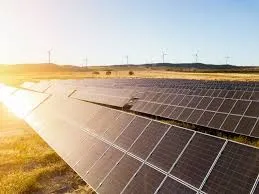Assessing the Performance and Efficiency of Thin Film Solar Cells for Sustainable Energy Solutions
Efficiency of Thin Film Solar Cells
Thin film solar cells have gained significant attention in the renewable energy sector due to their versatility, lightweight design, and potential for lower production costs compared to traditional silicon-based solar cells. However, one of the most critical factors affecting their widespread adoption remains their efficiency in converting sunlight into electricity.
The typical efficiency of thin film solar cells varies significantly depending on the materials used. Common materials include cadmium telluride (CdTe), amorphous silicon (a-Si), and copper indium gallium selenide (CIGS). Among these, CIGS has demonstrated the highest efficiency levels, achieving over 23% in laboratory settings. In contrast, CdTe and a-Si tend to have lower efficiencies, with CdTe typically reaching around 18% and a-Si around 10-12%. The lower efficiencies of thin film technology—compared to silicon solar cells, which can exceed 26%—pose challenges for their deployment, especially in space-constrained applications.
efficiency of thin film solar cell

Despite their lower efficiency, thin film solar cells offer several advantages. They are lightweight and flexible, making them suitable for a variety of applications, including building-integrated photovoltaics (BIPV) and portable solar solutions. Moreover, thin film technologies generally perform better in low-light conditions and have a lower temperature coefficient, meaning they maintain efficiency in higher temperatures, which can be particularly advantageous in hot climates.
Research and development efforts are ongoing to improve the efficiency of thin film solar cells. Innovations include optimizing material compositions, enhancing deposition techniques, and developing new tandem structures that layer different materials to capture a wider spectrum of sunlight. These advancements aim to push the efficiency up to levels that can compete more directly with traditional solar cells, making thin film technologies an increasingly attractive option for solar energy harvesting.
In conclusion, while the efficiency of thin film solar cells currently lags behind that of traditional silicon-based cells, their unique advantages and ongoing advancements in technology hold promising potential for the future. As the demand for flexible, lightweight, and cost-effective solar solutions continues to grow, improving the efficiency of thin film solar cells will be imperative in driving their acceptance and integration into the global energy landscape.
-
String Solar Inverter: The High-Efficiency Solution for Smart Solar EnergyNewsJul.14,2025
-
Revolutionizing Rooftop Energy with the Power of the Micro Solar InverterNewsJul.14,2025
-
Power Independence with Smart Off Grid Solar Inverter SolutionsNewsJul.14,2025
-
On Grid Solar Inverter: Powering the Future with Smart Grid IntegrationNewsJul.14,2025
-
Monocrystalline Solar Panels: High-Efficiency Power for the Future of Clean EnergyNewsJul.14,2025
-
Bifacial Solar Panel: A Smarter Investment for Next-Generation Energy SystemsNewsJul.14,2025







